Baldwin County was once a rural and mostly agricultural area that has changed and grown into what it is today.
While it is wonderful to add to our diverse population, it brings a hint of panic …
This item is available in full to subscribers.
Please log in to continue |

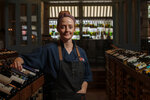



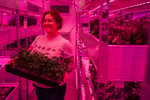
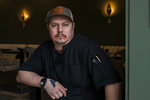

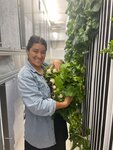

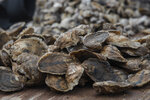
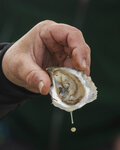
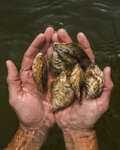
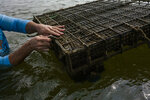
Baldwin County was once a rural and mostly agricultural area that has changed and grown into what it is today.
While it is wonderful to add to our diverse population, it brings a hint of panic about where and who will grow our food as neighborhoods fill fields once planted with peanuts and soybeans.
Luckily, there are still growers and producers and innovative business folks in our area filling our plates and supplying local restaurants.
Farm-to-table is a term popular in the restaurant industry over the last 53 years thanks to California Chef Alice Waters, but the term has a deeper history that started long before we started using terms like sustainability.
According to the USDA National Agricultural Library, the term stretches back to 1914.
Under President Woodrow Wilson’s administration, the farm-to-table initiative was created to transport produce from rural areas to cities using the Postal Service. On March 25, 1914, the program had its first test with 12 post offices. The program proved important not only for connecting farmers to consumers but also for launching the Postal Service’s parcel post service.
Thankfully, here on the Gulf Coast, we have diverse agriculture within reach but also have the added benefit of coastal agriculture. Here we can add a new word to the popular phrase: "farm-gulf-to-table." OK. It doesn’t roll off the tongue quite as eloquently.
Over the last few years of interviewing Gulf Coast chefs, producers and growers, I have seen firsthand the diverse farm-to-table offerings we have in Baldwin and Mobile counties. Many chefs have commented on how lucky we are to have the availability and range of fresh products so readily available.
Chef Arwen Rice, executive chef at Red or White Mobile and 2024 James Beard Awards Semifinalist for Best Chef: South, didn’t grow up on the Gulf Coast, but she was quick to say there is no place else she would rather cook.
"We are so lucky. I am so glad we moved down here because where else can you go and have this much abundance? Whether it's vegetables, fresh fish, the guy in Citronelle raising pics," Rice said. "You wonder why more people don't open restaurants down here. I would love it if maybe some people would move down here and shake up the food scene a little bit. Make it one of those foodie cities."
Many local chefs change menus with the seasons or patiently wait for their favorite produce to come into season. Perdido Beach Resort Executive Chef Brody Olive won the Alabama Seafood Cook-Off and the Great American Seafood Cook-Off in 2023 with products he foraged and caught locally. While he can’t add mole crabs to the Voyagers menu, he can patiently wait for his favorite produce to come into season.
In an interview with Gulf Coast Media in 2023, just after his Alabama Seafood Cook-Off win, Olive said the menu proteins don’t change much but that it is the accompaniments and side dishes that rotate. His favorite is when local sweet corn comes into season and he can put pork belly creamed corn on the menu. He also loves tomato season. He said he celebrates the first heirloom tomatoes of the season with a staff meal of BLTs.
In the last two years, Gulf Coast Media has interviewed two true farm-to-table businesses: The Hope Farm and Feast & Company.
The Hope Farm has made quite an impact in its four years. What started as an idea to build a shipping container farm with a small wine bar has evolved into a complex that includes the main restaurant, The Barn, a shipping container growing operation and edible gardens.
Executive Chef Adam Stephens and the culinary team have fresh-grown mushrooms, herbs and greens grown on-site to utilize.
“Seasonality is always going to be a focus. You always want to work with things at their peak,” Stephens said. “I don’t want to get fresh tomatoes shipped in from Peru in the dead of winter. I am going to wait to put a beautiful tomato salad on the menu when they are ripe, and I can go next door to the farm and pick them.”
Feast & Company and Fleurish Farms in Foley are technically two separate companies but are run by three generations of the same family. Mary Wills-Garcia, her teenage daughter Abi Garcia and her mother, Becky Wills, are the smiling faces you will see in their Foley storefront at Feast & Company and the Coastal Alabama Farmers and Fisherman’s Market on Saturdays. Garcia creates take-and-bake and ready-to-eat meals, soups and more using the herbs and greens grown in Wills’ hydroponic shipping container. You can’t get much fresher. The Texas transplants hit the ground running and have added to the business offerings in historic downtown Foley.
The last piece to this farm-to-table adventure is the aquaculture working to delight palates while cleaning the local waters. Gulf Coast Media has had the privilege to visit two oyster farms, both located on the Fort Morgan peninsula: Navy Cove Oysters and Admiral Shellfish Company.
Navy Cove Oysters spawned as a scientific question posed by one scientist to another in 2011. That’s what happens when two lifelong teachers and marine science researchers have a drink while on vacation. Luckily for Gulf Coast oyster lovers, the question “Do you think we could grow oysters in Navy Cove?” was confirmed and is now thriving with over a million oysters.
The best part of having career educators as aqua farmers is they enjoy sharing their knowledge with others. Sure, eating oysters is great if you are into that, but even non-oyster lovers can enjoy learning about how oysters help the local waters and provide a habitat for other marine life.
Just down the road, Admiral Shellfish has a similar farm and offers tours. You would be amazed how two farms so close together can produce a different oyster. Visit the farms and learn more about the wonderful things oysters do for the local environment and how the location of the farm changes the oysters’ flavor.
To keep the farms, farmers and producers we must support them so they can continue their work. Seek out local farmers you can support and the restaurants that support them as well.